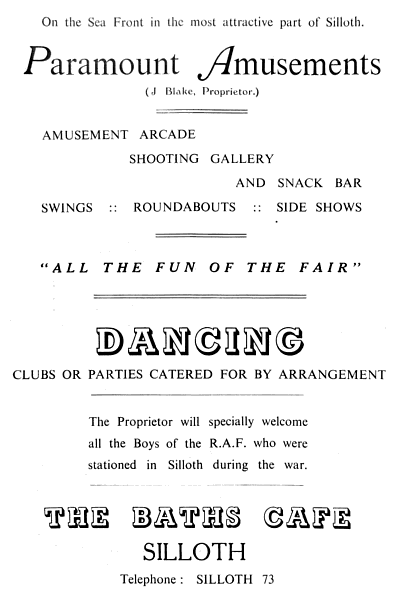

THE AMUSEMENT ARCADE ON SILLOTH GREEN-
or rather, THE BATHS ON SILLOTH GREEN
My mother's family always called it "Blakeys" but it used to have the words "Paramount Amusements" on the front. The building has not exactly gained in beauty over the years I've known it, but it remains one of the fixtures of the seaside resort of Silloth, on the Solway Firth in north-west Cumbria. This web-page attempts the beginnings of a history of what started out as a very different sort of tourist attraction, a set of baths built to rival those in nearby Allonby, just two years after the opening of the railway made it possible for tourists to visit this wild stretch of the Cumbrian coastline.
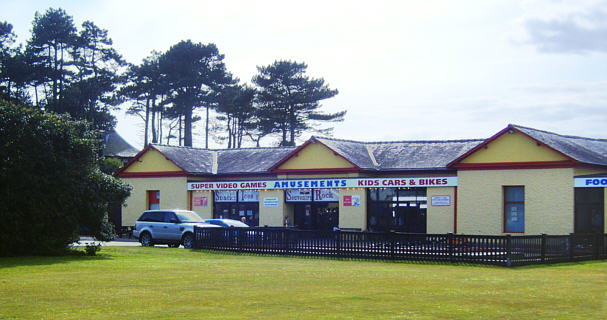
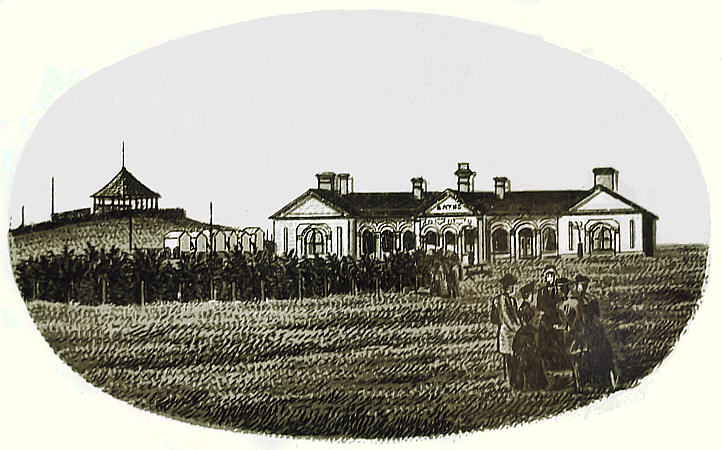
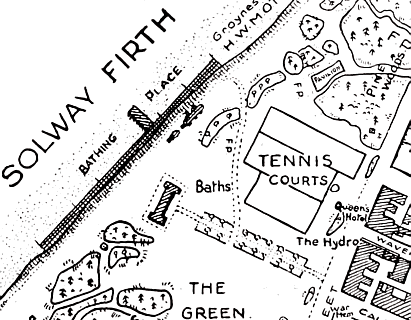 Bulmer's directory of Cumberland, 1883:
Bulmer's directory of Cumberland, 1883: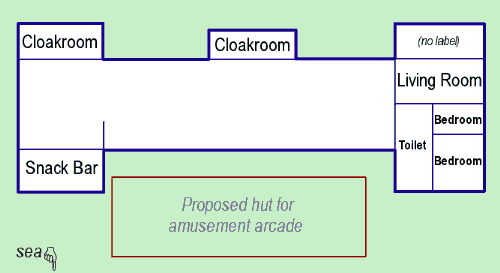 The Second World War was not kind to the tourist industry, and its ending was eagerly anticipated. So eagerly, in fact, that on 30 April 1945- before VE Day- the then proprietor, Mr W. Johnstone, submitted a plan to add an extension for a amusement arcade, which was to be housed in a Ministry of Works and Buildings hall hut, to be placed along the seaward side of the building as shown in the plan at left, based on an original supplied with the planning permission request [now in Carlisle Archives Office].
The Second World War was not kind to the tourist industry, and its ending was eagerly anticipated. So eagerly, in fact, that on 30 April 1945- before VE Day- the then proprietor, Mr W. Johnstone, submitted a plan to add an extension for a amusement arcade, which was to be housed in a Ministry of Works and Buildings hall hut, to be placed along the seaward side of the building as shown in the plan at left, based on an original supplied with the planning permission request [now in Carlisle Archives Office].
